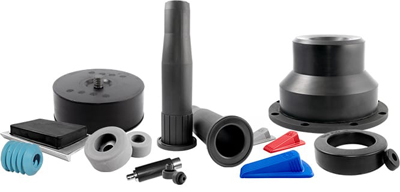HeatBoss EPDM: High heat resistant EPDM promising for SAE J200 applications
Ali Vahidifar, Elnaz Esmizadeh, Steven Yu – Air Boss of America
In modern cars, the space for the engine compartment is continuously shrinking for both functional and aesthetic reasons. Increasing vehicle compactness by reducing the space available for design engineers results in hotter engine components which restrict the rubber materials that can be used. This has boosted a fast growing demand in the rubber industry for elastomer parts with durability and increased resistance to temperature extremes. Among elastomers, silicone elastomers and fluoroelastomers show very effective heat resistance resulting from the strong Si-O and C-F bonds present in their chemical structure. However, the main drawbacks are their high price and high processing cost that make compounding, molding and final production very expensive.
Ethylenepropylene-diene terpolymer (EPDM), as the lowest density elastomer, is one of the general purpose, yet fast growing synthetic elastomers. It has found a wide range of applications in the automobile sector thanks to its exceptional qualities, including decent thermal stability that can be attributed to its saturated main chain structure. Today, EPDM, in terms of sales volume, is the top elastomer of choice among non-tire elastomers. Although the mostly saturated backbone provides good resistance to oxidation, ozonation and weathering, the capability of operating for an extended service life without losing functionality at high temperatures (above 320°F, for example) is still the most critical unmet need for EPDM systems. The progressive change in performance of elastomeric materials, i.e., deterioration, under heat aging can be represented by the occurrence of three typical types of reactions: heat induced crosslinks, chain scission and chemical structure alteration. It is well documented that peroxide curing leads to improved performance, service life and high temperature resistance of EPDM as compared to sulfur curing.

